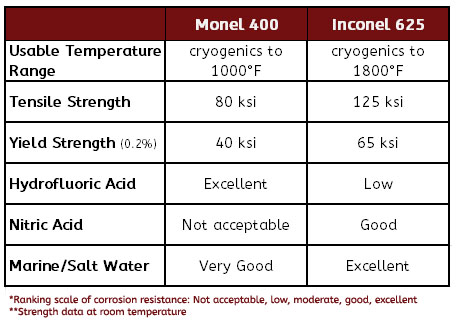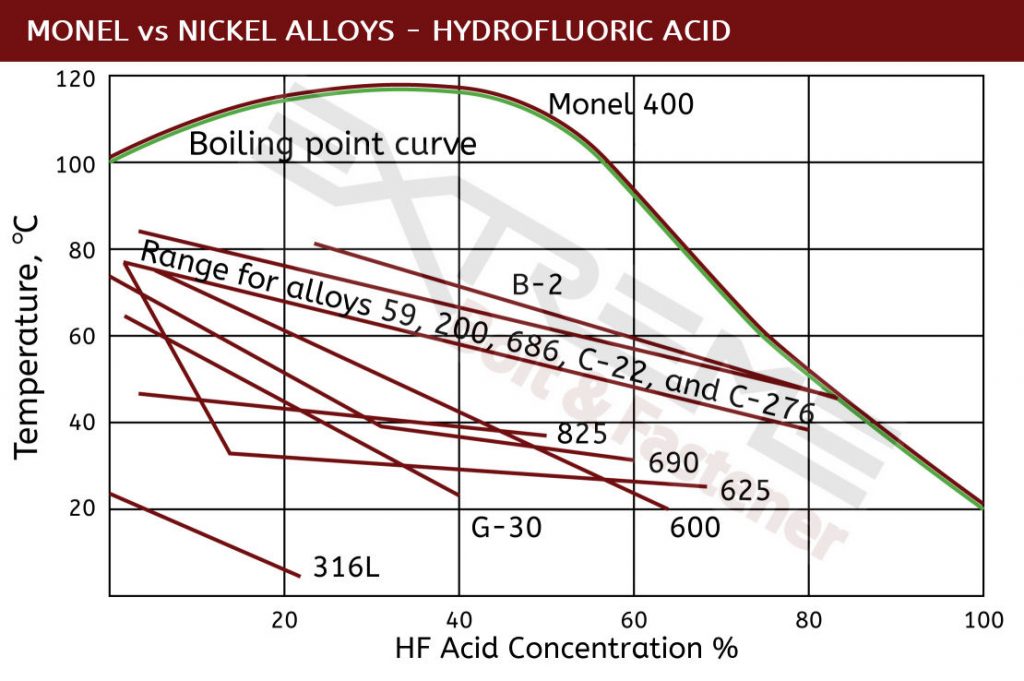 They rhyme, are both used in extreme environments, and are both nickel metal alloys, but Monel and Inconel are actually very different. But how?
They rhyme, are both used in extreme environments, and are both nickel metal alloys, but Monel and Inconel are actually very different. But how?
Let’s start with basic chemistry. Monel is a nickel-copper alloy and Inconel is a nickel-chromium alloy. So what does that mean for your extreme application? We will take a look at a side-by-side comparisons of these two alloys to help you better understand which is best for your challenging application.
The Basics
Put simply, Monel is a mid-range specialty alloy. It is shines as one of the few alloys that can handle hydrofluoric acid, which will corrode even pure tantalum (one of the most corrosion resistant metals on earth). In addition, it is a good economical choice over Inconel for salt water conditions, performing especially well in rapidly moving seawater. For moderate temperatures and low concentrations of acid, Monel can also be a good choice, depending on specific conditions.

In comparison, Inconel far outperforms Monel in its high temperature usability, strength and corrosion protection. Inconel 625 is 50% stronger in terms of yield strength, over 60% stronger in tensile strength, and offers almost double the usable temperature limit.
So why choose Monel at all?
Monel 400 has excellent corrosion resistance to hydrofluoric acid. Almost comparable in seawater to Inconel, Monel performs very well, and at a much more economical price. For low concentration and low temperature acid environments, Monel can provide a reasonable technical and economic solution.
Hydrofluoric Acid
Few compounds are more corrosive than hydrofluoric acid – and few materials can provide the corrosion protection from it like Monel. Hydrofluoric acid is a unique anomaly when it comes to corrosiveness – it will even eat through solid tantalum which is the king of corrosion resistance. Yet, Monel 400 can withstand all concentrations of hydrofluoric acid, even up to the boiling point. In hydrofluoric acid, Monel 400 and Hastelloy C2000 are leaders in protection. It is recommended that Monel 400 is most suitable when fully immersed. Keep in mind aeration or the presence of oxidizing salts will increase the corrosion rate. Here Inconel 625 does not perform as well, making Monel 400 the better choice.

Economic Seawater Protection
Both Monel and Inconel perform extremely well in salt water environments. The only difference is that Monel can experience pitting corrosion in stagnant sea water, though the progression of pitting slows tremendously after the initial attack. Yet, Monel shows superior performance in rapidly moving seawater, which makes it a material of choice for the Navy. As both are highly resistant, we often suggest Monel 400, as Inconel is more expensive and often overkill for many marine environments.

Great post easy to understand the difference because of chart showing the difference keeping share such information